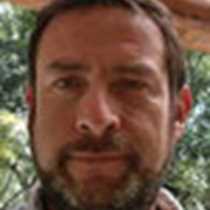Today we visited Genovesa Island, located in the northeastern most part of the archipelago. This island is different from all the other islands because it has the strongest influence of the Panamic current (72 F), but also because it sits outside of the Galapagos platform and is surrounded by deep water.
Because of these conditions, Genovesa harbors a unique assemblage of species, including the largest colony of red-footed boobies, an important colony of Galapagos and Maderian Storm petrels, and many other sea birds. In addition, cactuses have soft spines, an adaptation to the lack of grazers (tortoises and land iguanas).
In the morning we landed at Darwin Bay and observed, for the first time during this trip, the red footed boobies. This is the smallest of the three species that breed in the Galapagos. They nest on trees and lay only one egg. The juveniles are very curious and we observed one that landed on the head of one of our passengers (see picture below). We also saw Great frigate birds nesting on trees and swallow tailed gulls mating and brooding their chicks. We also spotted a yellow crowned heron.
In the afternoon we visited Prince Phillip’s steps and observed red footed boobies and Nazca boobies while courting, mating, and nesting. We also saw the Galápagos owl which feeds mainly on storm petrels and is active during the day because the Galapagos hawk is absent from this island.
Later in the morning we snorkeled around Darwin Bay and spotted the Moorish Idol, a beautiful fish common in the northern, more tropical islands of the archipelago. We also spotted the fur sea lions resting on the cliffs of Darwin Bay. We also observed several red billed tropical birds flying above us.






